The 22 destinations that will be especially hot this year—and the data you need to plan your trip.

New dome suites at Jordan’s Sun City Camp, in Wadi Rum.
Photographer: Gabriela Herman for Bloomberg Businessweek
Bloomberg PursuitsJanuary 2, 2018, 6:00 PM GMT+8
From Subscribe Reprints
Plenty of cities are always worth a visit. But when destinations are in the midst of an evolution—bursting with new, standard-setting hotels and restaurants, or chock-full of new cultural attractions—you can expect a spark of electricity in the air. The alchemy of being in the right place at the right time is exactly what transforms a good vacation into a great one.
With that in mind, we’ve scoured the globe for the most exciting openings and events in 2018 and boiled them down to 22 especially compelling destinations. And to make sure you can plan your trip for just the right time of year, we sourced hotel pricing insightsfrom Google and seasonal recommendations from regional travel specialists that we know and trust. Take it from them: The cheapest and most expensive times to go are rarely the best and worst.
You’ve got the vacation days. Here’s how to use them.
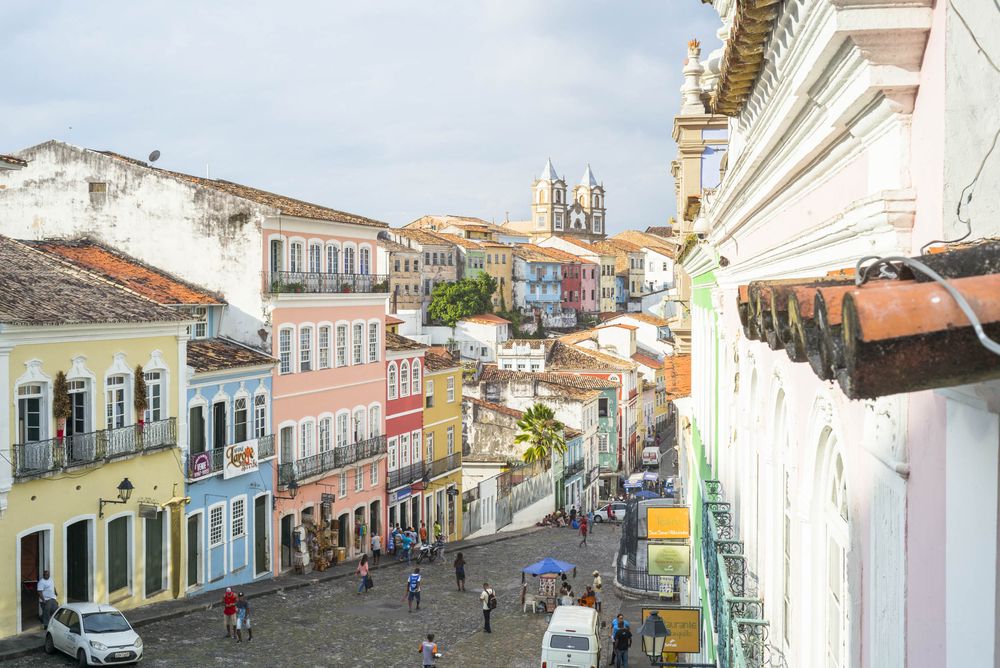
Salvador’s old town center, the Pelourinho.
Photographer: Uiler Costa for Bloomberg Businessweek
SALVADOR, BRAZIL
While São Paulo is busy pushing the boundaries of a modern megalopolis, one of Brazil’s most laid-back colonial towns is heading in the opposite direction. With a population of 2.6 million midway down the state of Bahia’s laid-back coast, Salvador is emerging from a government-led, five-year historic preservation effort. Its once-abandoned city center, filled with 400-plus-year-old, kaleidoscopic baroque buildings, is abuzz again. The nexus of the country’s slave trade during the colonial era, Salvador remains the beating heart of Afro-Brazilian music culture: A spirited choir and live percussion band accompany mass at the Church of Nossa Senhora do Rosário dos Pretos, and jam sessions erupt each Saturday at sunset outside the city’s seaside Museum of Modern Art (MAM-BA).

Midyear, Brazil’s sexiest hotel chain, Fasano, opens its fifth outpost in a former newspaper office in the up-and-coming Cidade Alta neighborhood; the art deco-inspired Fera Palace, whose rooftop overlooks Salvador’s azure harbor, is already open. Oh, and don’t forget the gleaming beaches.
When to go: Salvador is at its most vibrant during its summer, December through April.
When not to go: Skip the rainy months of June and July. It’s also worth noting that the city shuts down for Carnival’s over-the-top street parties, which run from Feb. 8 to Feb. 14 this year.
Whom to call: Martin Frankenberg of Matuete.
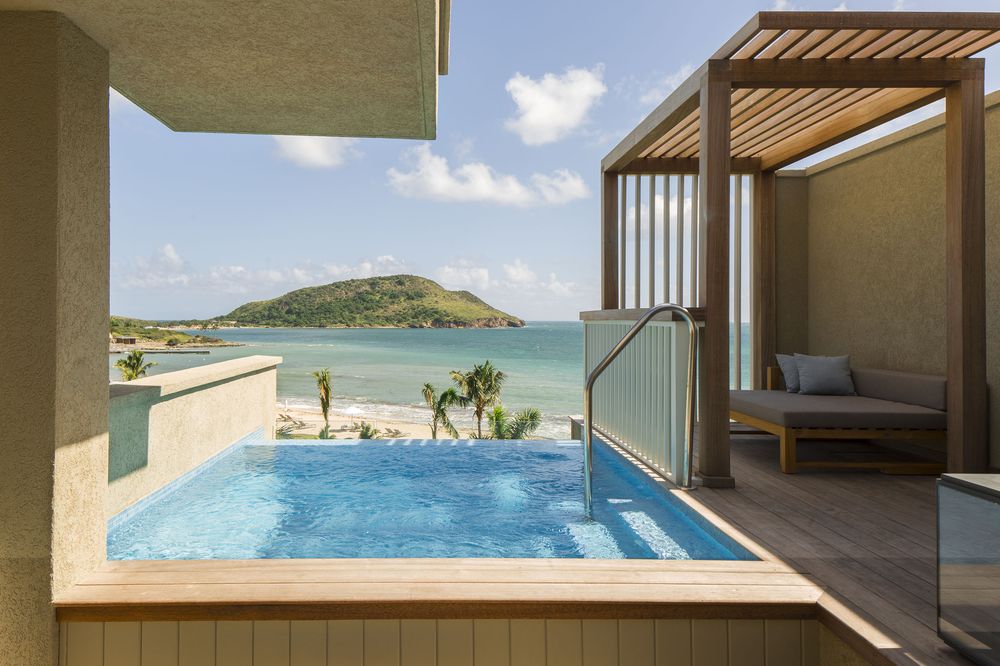
View from a private plunge pool at the Park Hyatt St. Kitts.
Photographer: Evan Ortiz for Bloomberg Businessweek
ST. KITTS
St. Kitts has pulled off a beach-escape hat trick: It feels untouched while being both comfortable and convenient. A quarter of it is preserved as American oceanic rainforest, perfect for hiking through pristine wilderness, but the island also offers the infinity pools and beachfront cafes travelers hope for in a luxe vacation.

After surviving last year’s hurricanes unscathed, the destination got a considerable injection of glitz when the 126-room Park Hyatt opened in November. The first five-star beach resort on St. Kitts, it’s located on a secluded white-sand cove near the island’s southern tip; suites with private pools overlook the Caribbean Sea and the neighboring island of Nevis, while the three-bedroom presidential villa has a private chef and dedicated fitness area. The resort anchors Christophe Harbour, a new, 2,500-acre luxury development and superyacht marina, which means guests have the twin benefits of privacy and quick access to high-end boutique shopping.
In terms of convenience, Delta has begun offering nonstop routes from Atlanta and New York, making St. Kitts more accessible than many of its Caribbean peers.
When to go: May—when you’ll find great deals and few crowds—or the six weeks in November and December that are bookended by hurricane season and holiday madness.
When not to go: Heed the big lesson of 2017, and steer clear of the Caribbean in the peak storm months from June to October.
Whom to call: Lindsey Epperly of Epperly Travel.
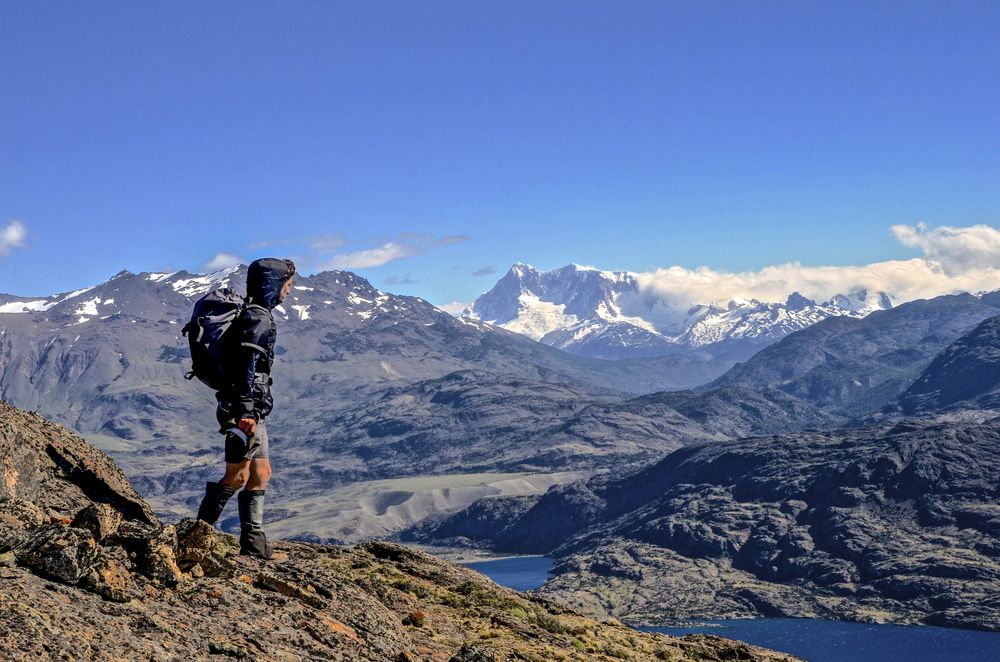
Source: Black Tomato
CHILEAN PATAGONIA
Antarctica may get all the attention, but the southern Patagonian ice fields are gradually melting, too. Luckily there are several new avenues for travelers who want to get there sooner rather than later. Bespoke travel company Black Tomato now offers a journey to the untrammeled area of Aysén, letting adventurers explore caves, hike glaciers, and ride down rapids in the least-populated region in Chile. On the shores of Lake Llanquihue is Hotel Awa—a marvel of concrete and glass that adds to the country’s collection of remote, contemporary luxury hotels. It makes a great home base for fly fishing, hikes up snow-capped Osorno volcano, and authentic cultural encounters with indigenous communities.

The areas further south are becoming easier to see by boat: Starting this month, Australia’s new, 210-passenger ship, the Ventus Australis, will sail four-night itineraries through the fjords of Tierra del Fuego; by the end of the year, luxury line Azamara Club Cruises Inc. will introduce a three-week journey that takes in the length of Chile, starting in Lima and winding up in Buenos Aires.
When to go: Early March—the tail end of peak season—when crowds have dispersed, hotel rates dip, and temperatures hover at a comfortable 60 degrees.
When not to go: July. Winters are cold and wet, and most hotels are closed.
Whom to call: Tom Marchant of Black Tomato.
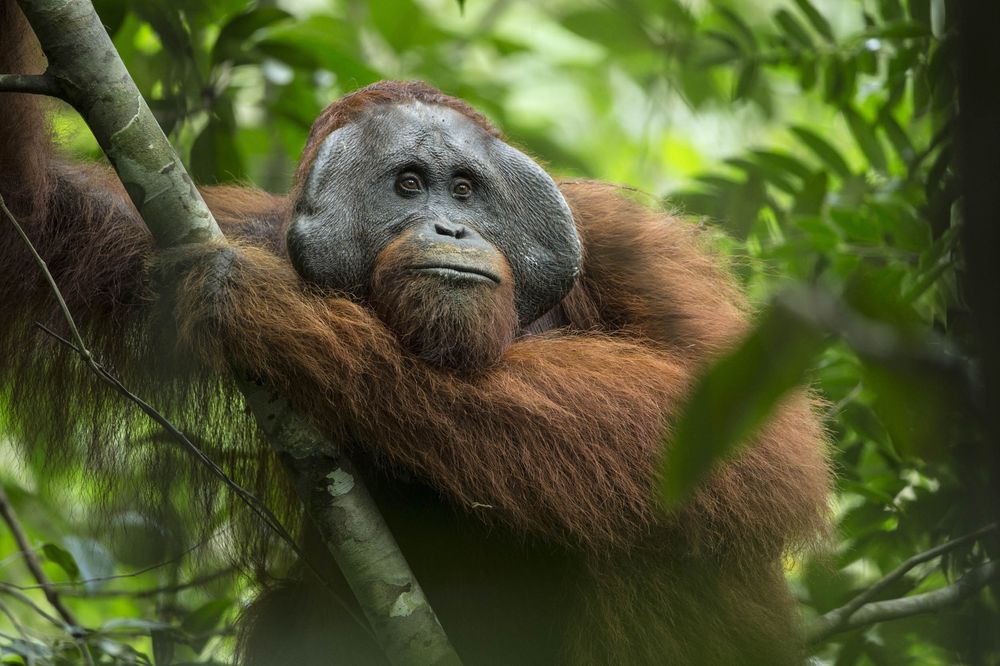
Photographer: Tim Laman/Getty Images
BORNEO
Sitting north of Jakarta and east of Singapore is lushly forested Borneo, home to most of the planet’s 120,000 remaining orangutans. Unlike its neighbors, the third-largest island in the world (Malaysia, Brunei, and Indonesia all lay claim to parts of it) has yet to register on the traditional tourist map. That’s changing, though, as wildlife enthusiasts race to see these sweet-faced primates before their population declines any further.

Facilitating these untapped adventures are such newcomers as the luxe-leaning Audley Travel and G Adventures, which has a partnership with National Geographic. Charter cruises meander down lazy tributaries of the Lemanak and Kingbata rivers, stopping in on the Indonesian side to see the conservationists at Camp Leakey, whose founder mentored Jane Goodall and Dian Fossey, or Sepilok Orangutan Sanctuary, an orphanage and rehab center in Malaysia territory.
The itineraries are easily combined with traditional bucket-list destinations—Bali is a popular pick—but why bother? Borneo is a gorgeous treasure trove unto itself, with former headhunting villages tucked amid rice terraces and an increasing number of honeymoon-worthy hotels, such as the newly redone Mulu Marriott, set near the Brunei border, within spitting distance of the craggy karst formations in Mulu National Park.
When to go: Wildlife is best spotted from late May through September. Just know that “dry season” is a relative term here.
When not to go: December and January put the rain in rainforest.
Whom to call: Pat O’Connell of Asia Transpacific Journeys.
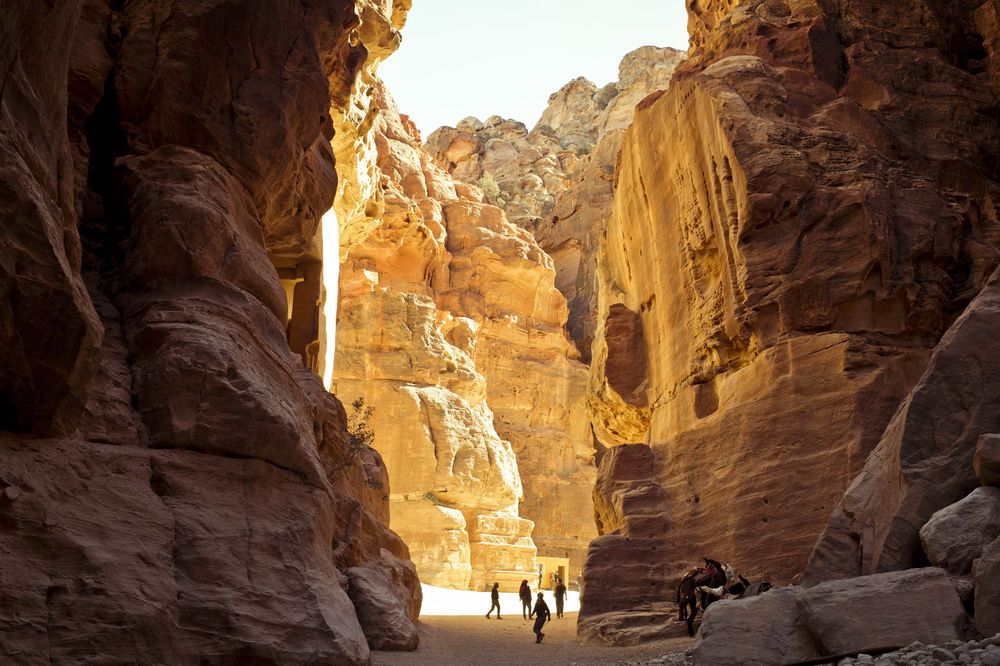
Photographer: Gabriela Herman for Bloomberg Businesweek
JORDAN
As a conflict-free oasis of the Middle East, Jordan has experienced double-digit tourism growth over the past 12 months. The upward trajectory has been spurred by an influx of public and foreign money bolstering infrastructure: The Jordan Trail, a long-distance hiking route from Umm Qais in the north to Aqaba in the south, was recently created by the government’s adventure travel wing. The 400-mile expedition strings the best of the nation’s natural highlights into a journey of biblical proportions—it’s meant to take 40 days and 40 nights—cutting through the jagged Dana Biosphere Reserve and the rock-hewn city of Petra before ending at the Red Sea. Trekkers are encouraged to stay in Bedouin camps and eco lodges along the way, whether they tackle the entire trail or one of eight 50-mile-long sections.

A highlight is Wadi Rum, aptly referred to as the Valley of the Moon, which now has luxurious bubble-dome camps scattered throughout its pockmarked sandstone recesses. Explore the landscape by camel, on foot, or via four-wheel drive during the day, then stargaze from your bed at night. And don’t forget Jordan’s capital: By May, Amman will welcome two new hotels, a W and a St. Regis, offering a plush way to bookend your dusty desert explorations.
When to go: April and October, when daytime temperatures of 75 to 80 degrees F are perfectly suited to Petra hikes and Dead Sea swims.
When not to go: December to February. Desert nights are cold year-round, and they’re punishing in the winter; Amman actually got snow last year.
Whom to call: Jean Newman Glock of Signature Travel Network.

Photographer: Ross Fraser McLean
DUNDEE, SCOTLAND
Few international travelers have heard of this port town 60 miles north of Edinburgh. Locally, it’s best known as the 19th-century center of the jute trade and the (supposed) birthplace of orange marmalade. But later this year, Scotland’s first design museum, the V&A Museum of Design Dundee, will open on the city’s waterfront in a gleaming building that evokes a ship’s prow jutting over the water; it will showcase Scotland’s wide-ranging design legacy, including Hunter boots and Dennis the Menace cartoons.

It’s just one piece of a $1.3 billion revitalization project on the River Tay that will also include a new train station, art installations, and an urban beach—cementing Dundee’s status as an up-and-coming cultural hub. Travelers can come on day trips from Edinburgh, Scotland’s capital, or arrive directly by ship: Azamara Club Cruises and Crystal Cruises make their first calls here in July.
When to go: May, ahead of the high-season summer crowds and the seasonal hotel-rate spike.
When not to go: November to February, when the area’s notoriously rainy weather is at its worst and the days are painfully short.
Whom to call: Claire Schoeder of Travel Edge.
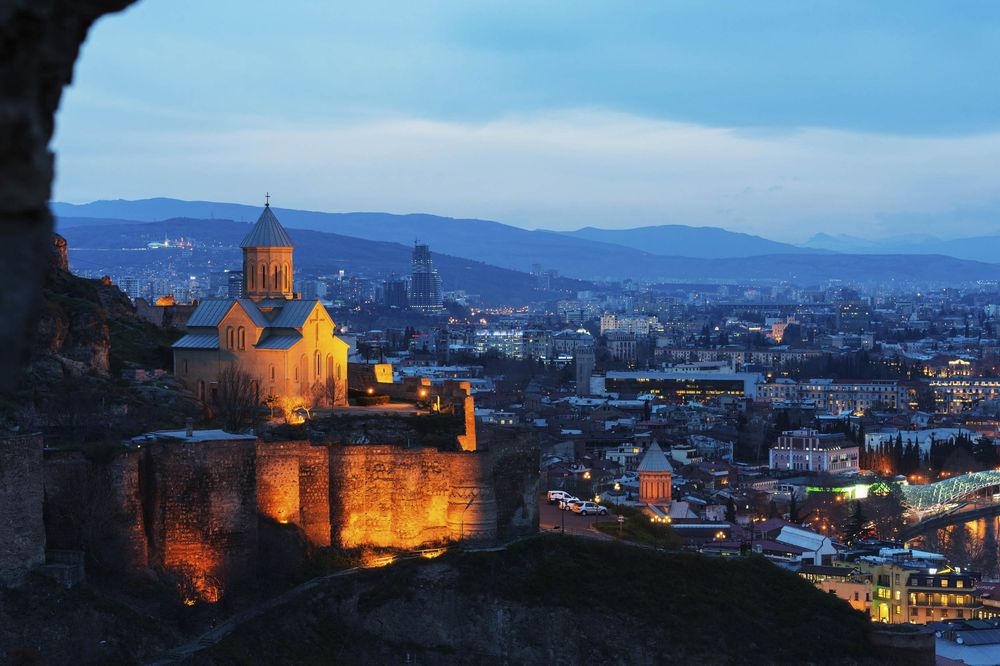
Photographer: Robert Harding/Alamy
GEORGIA
Since its founding in the mid-5th century, Georgia’s capital and largest city, Tbilisi, has been destroyed and rebuilt more than 29 times. It’s no surprise then that its resilient spirit and creative energy have earned the city comparisons to Berlin in the mid-aughts, before it was widely known as an edgy nightlife capital. Influences from times under the Persian Empire and the Soviet Union have left distinct marks on the country’s culture, most notably in its vegetarian-friendly cuisine, such as the cheese-filled khachapuripie.
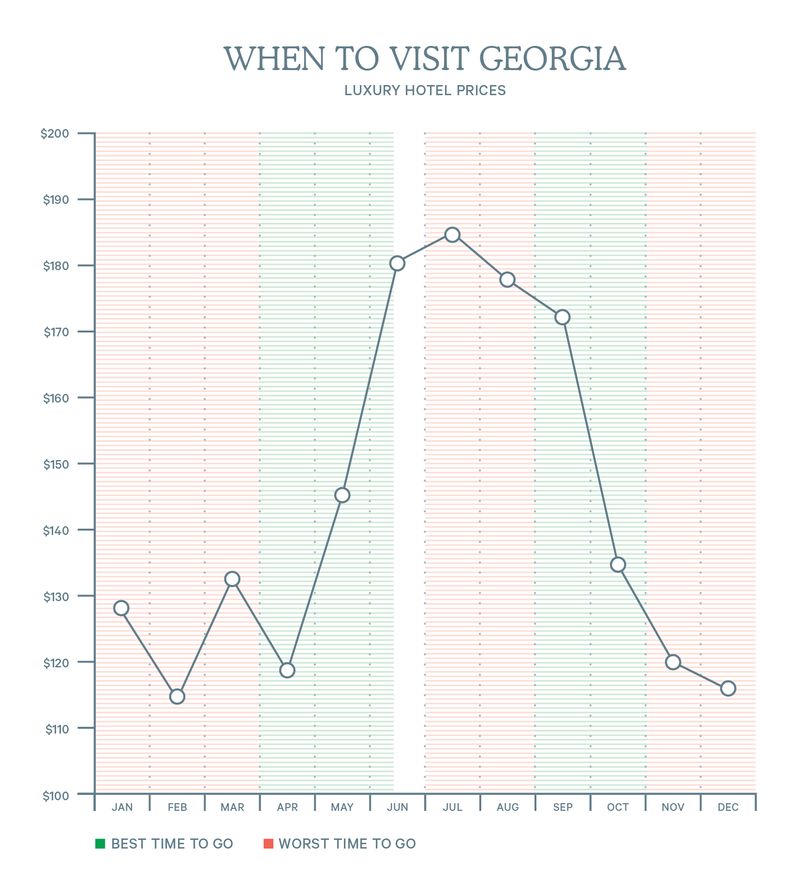
Its nascent hotel scene, however, is entirely homegrown. The five-year-old, fiercely Georgian hospitality brand Adjara has been instrumental in creating an aura of cool with its Rooms hotels in Tbilisi and a ski resort in Kazbegi. This spring, the group introduces the capital’s first five-star property, Stamba, in a Soviet-era printing house; all are part of the Design Hotels collection. Its 2018 expansion plan includes high-design openings in the mountains of Mestia, seaside Batumi, and wine country. Not familiar with Georgian vintages? Wine snobs are: The country is said to be the birthplace of viticulture, with production of strong, antioxidant-packed orange varietals spanning 8,000 years. Consider it just one more item in a long list of surprises that’s drawing such luxury tour operators as Wild Frontiers and Butterfield & Robinson to the burgeoning republic.
When to go: Take advantage of great weather in the spring (April through early June)—or peak harvest season in September and October, when local dishes, such as phkali, a spread made of minced vegetables and ground walnuts, are at their best.
When not to go: Skip the too-hot months of July and August; the long winter season, from November through March, is undesirably cold and wet.
Whom to call: Greg Tepper of Exeter International.
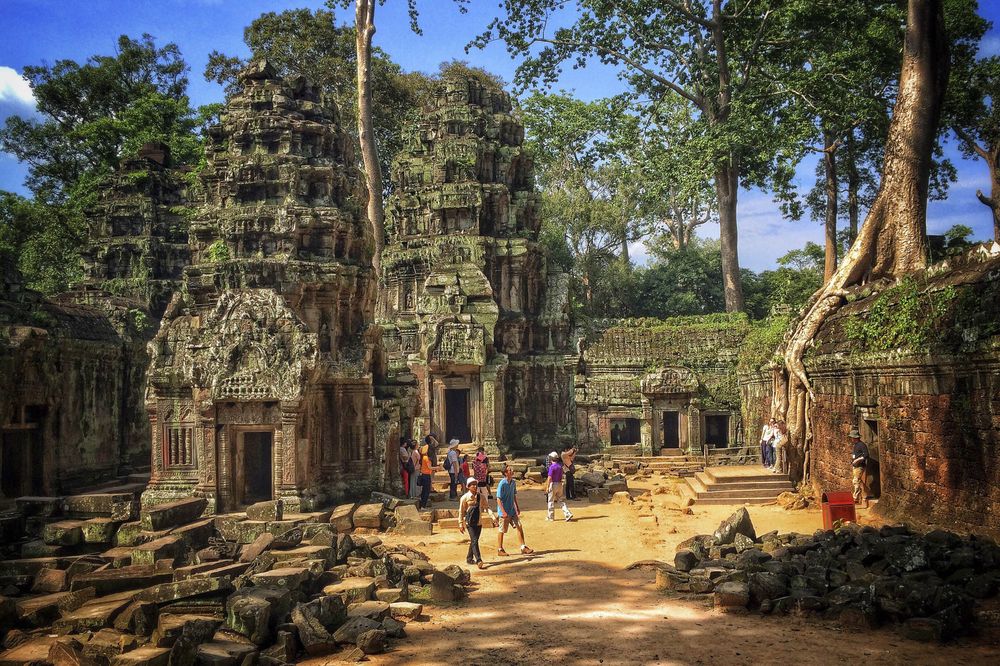
Photographer: Khim Hoe Ng/Stockimo/Alamy
CAMBODIA
It used to be that a trip to Cambodia could easily begin and end with the spellbinding Khmer temples of Angkor Wat. No longer. Interest in the country’s natural treasures now extends to the country’s untouched islands and mountainous rainforest—where the first signs of luxury infrastructure will be popping up in 2018.
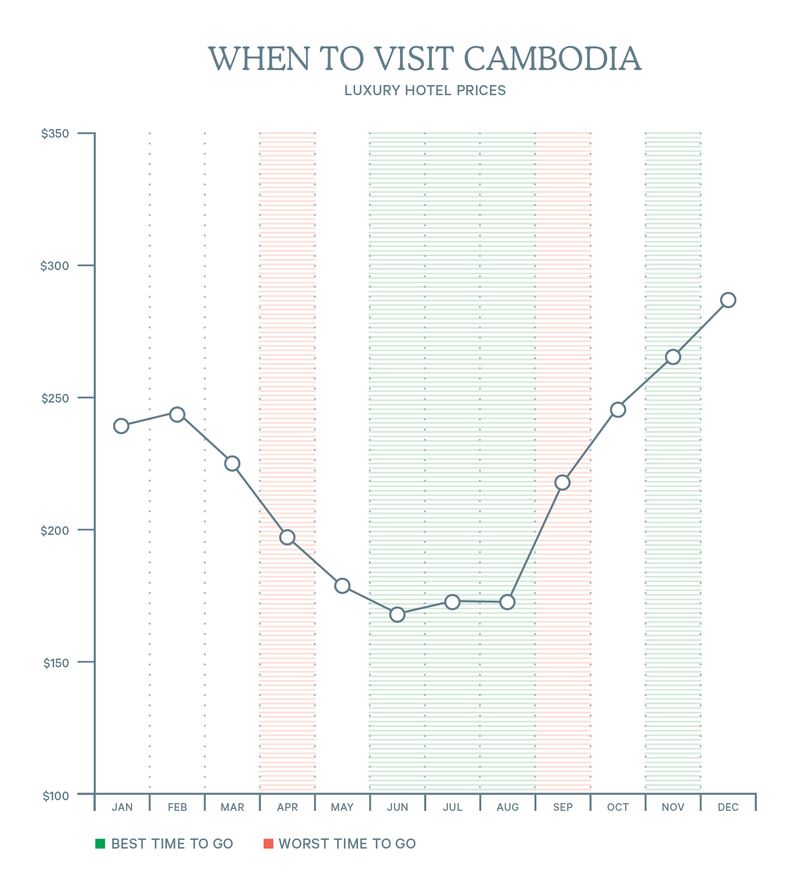
When it opens this fall, Shinta Mani Wild will have 16 safari-style tents in a previously unprotected wildlife corridor near Southern Cardamom National Park; the local residents include wild elephants, bears, and tigers. On off-the-beaten-path Krabey Island, a 15-minute speedboat ride from the country’s southern coast, Six Senses will open in September with 40 pool villas, some complete with private wine cellars and all with outdoor showers. (It’ll quickly gain competition when Alila opens a stone’s throw away, on Koh Russey, laying claim to the longest private beach in the Cambodian islands.)
There’s good news for business travelers, too: A Rosewood is expected in Phnom Penh early in the year, at the top of the soaring, dragon-shaped Vattanac Capital Tower. The architectural symbol for modern Cambodia is the perfect home base for exploring a metropolis on the rise.
When to go: November, at the start of the dry (and busy) season. Alternately, going from June to August means low room rates, fewer crowds, and a lush, green landscape—with an afternoon shower or two.
When not to go: April (too hot) and September (too wet).
Whom to call: Andy Booth of AboutAsia.
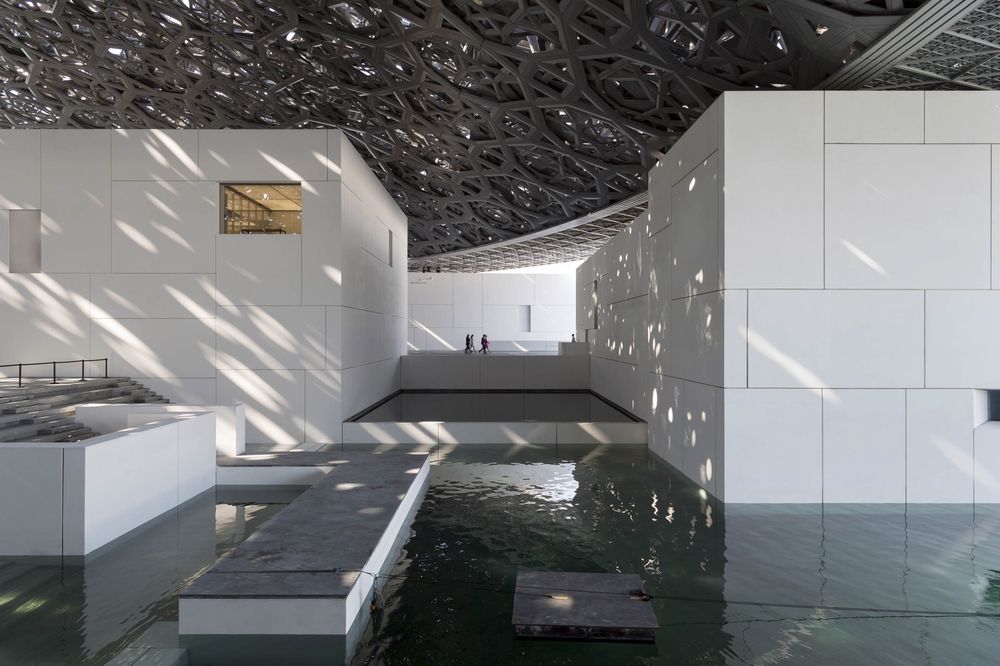
Photographer: Luc Castel/Getty Images Europe
ABU DHABI
If Dubai comes off as the Las Vegas of the Middle East, Abu Dhabi is making a play to be the region’s Paris. The emirate’s new crown jewel is the billion-dollar Louvre Abu Dhabiwhere, beneath a latticed steel dome by Pritzker Prize-winner Jean Nouvel, you’ll find 7th century Qurans, 20th century Picassos, and Leonardo da Vinci’s Salvator Mundi—yes, the one that recently sold for $450 million. Other major institutions will join it in coming years, including Frank Gehry’s Guggenheim Abu Dhabi and the Performing Arts Centre, by the late Zaha Hadid.

But don’t wait to visit: A growing number of luxury cruise ships are pulling into port, and for families there will soon be the $1 billion Warner Bros. World theme park. Reserve a room at Ian Schrager’s much-anticipated 244-room Edition, coming soon to the Al Bateen waterfront.
When to go: February or March. Cooler temperatures—still up there, with highs often in the 70s and 80s Fahrenheit—makes it prime time for festivals and events.
When not to go: Summer months. It’s never fun exploring a city when it’s 110 degrees outside.
Whom to call: Lindsey Wallace of Linara Travel.

Photographer: Westend61/Getty Images
NAMIBIA
There’s more to Namibia than the otherworldly dunes of Sossusvlei or the scorched plains of Deadvlei you’ve seen in National Geographic. But with little tourism infrastructure in this vast, final frontier of Africa, it’s been difficult until now to see it all. This August, luxury newcomer Namibia Exclusive will unveil a four-camp circuit that’s been a decade in the making. Trips will offer cultural exchanges with the Himba people, who are isolated in the country’s northern fringes; prime views of chalk-colored elephants in Etosha National Park; and access to 2,000-year-old rock carvings that are the work of Bushman tribes in Damaraland.
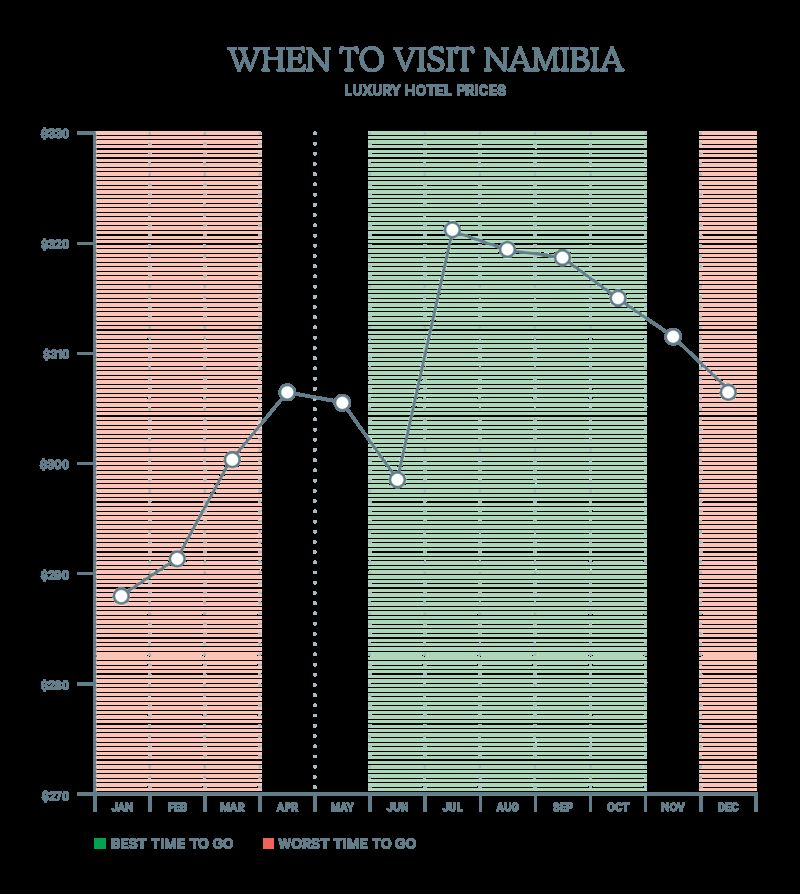
Elsewhere, family safari specialist Natural Selection is opening two camps—one in partnership with the Giraffe Conservation Foundation—and local pioneer Wilderness Safaris is renovating its ultra-remote Serra Cafema camp in Kunene. You can also arrive by sea: Silversea now has sailings hitting the dry coastal landscapes of Luderitz and Walvis Bay, combinable with land itineraries that go deeper under the skin of this fascinating country.
When to go: From June to October, game viewing around Namibia’s waterholes is some of the best in Africa.
When not to go: December to March, when it’s rainy, hot, and humid. Animals are also spread out and harder to spot.
Whom to call: Teresa Sullivan of Mango African Safaris.
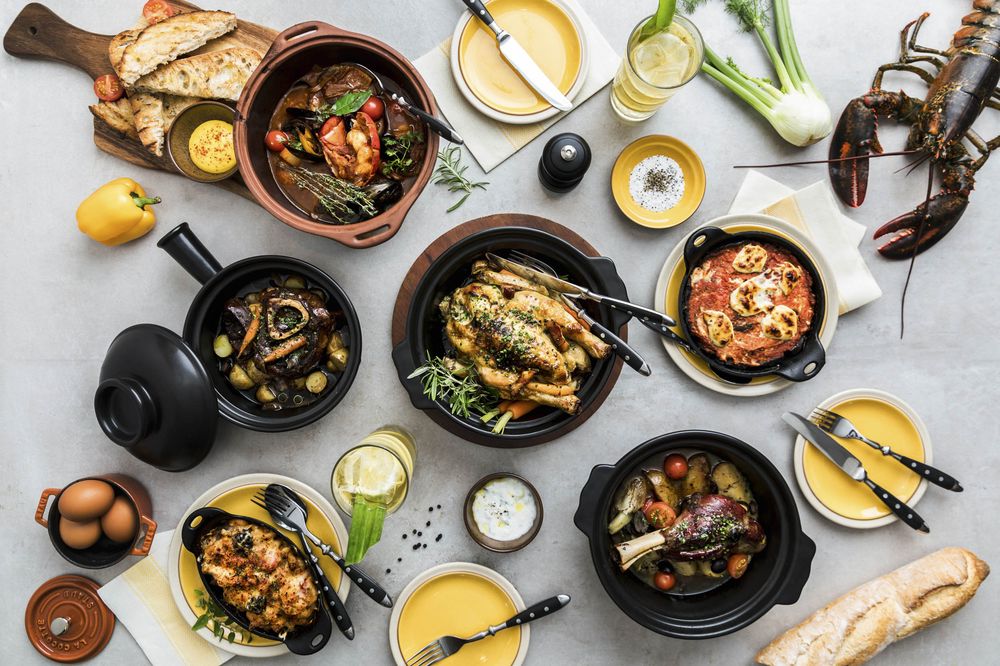
Source: Andaz Hyatt
SINGAPORE
The city-state once famous for its ban on chewing gum is loosening its necktie. Coming off 2017, it claims six of the World’s 50 Best bars, 47 Michelin stars, and $2.4 billion in new technology investments—in other words, the city is red-hot.
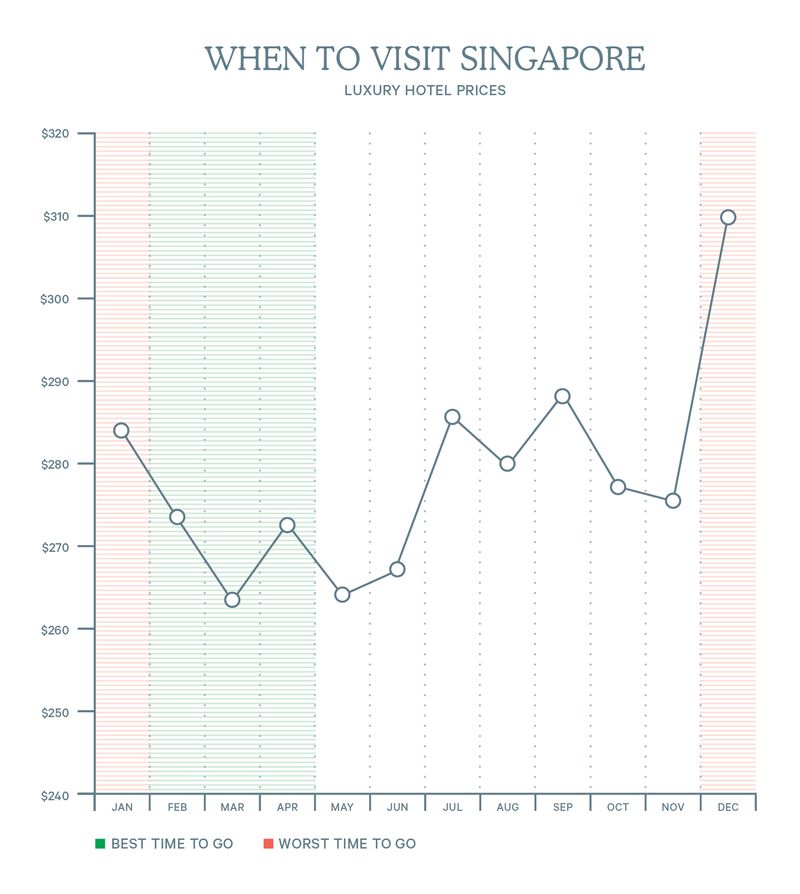
This year, one of the most eagerly anticipated hotel openings—in any country—is the renovation of the Raffles. The iconic property’s first revamp since 1991 will include brightened interiors by design maven Alexandra Champalimaud that nod to its original colonial character; Raffles will also welcome three celebrity chefs, including Alain Ducasse, to its acclaimed slate of restaurants and bars.
Nearby, the glassy Andaz opened in October with 342 rooms and five restaurants arranged as a sort of high-end hawker court on the property’s 25th floor. Face-scanning and biometric technologyare now commonplace at ever-reliable Changi Airport; by the end of the year, the new Terminal 4 will begin welcoming inaugural nonstop routes from New York—made possible by Singapore Air’s long-range A350-900 jets. Even weekend jaunts from the city-state are being optimized and upgraded. Bawah Island, the local answer to the Maldives, is a private island resort with 24 luxe tents, 11 over-water bungalows, and unplugged tropical vibes.
When to go: February to April, post-monsoon season. Chinese New Year (Feb. 16) is a fun time to visit, thanks to a large Chinese population that throws a good party.
When not to go: Skip visiting during December and January—it’s monsoon season.
Whom to call: Dan Ilves of TravelStore.

Photographer: Vova Pomortzeff/Alamy
SLOVENIA
Looking for the next Iceland? This pristine mountain playground has leaped out of obscurity as a host of fiercely creative locals cast a spotlight on its extraordinary natural bounty. Ales Cesen, one of the world’s most accomplished Alpinists and winner of the Piolet d’Or (the Oscar of mountaineering), will soon open a climbing academy offering customized expeditions through the craggy Julian Alps. Adventures such as rappelling down cliffs near Lake Bled or navigating the labyrinthine Škocjan cave system are easily accessible from the castle-topped capital of Ljubljana, where a minimalist Intercontinental Hotel just opened.
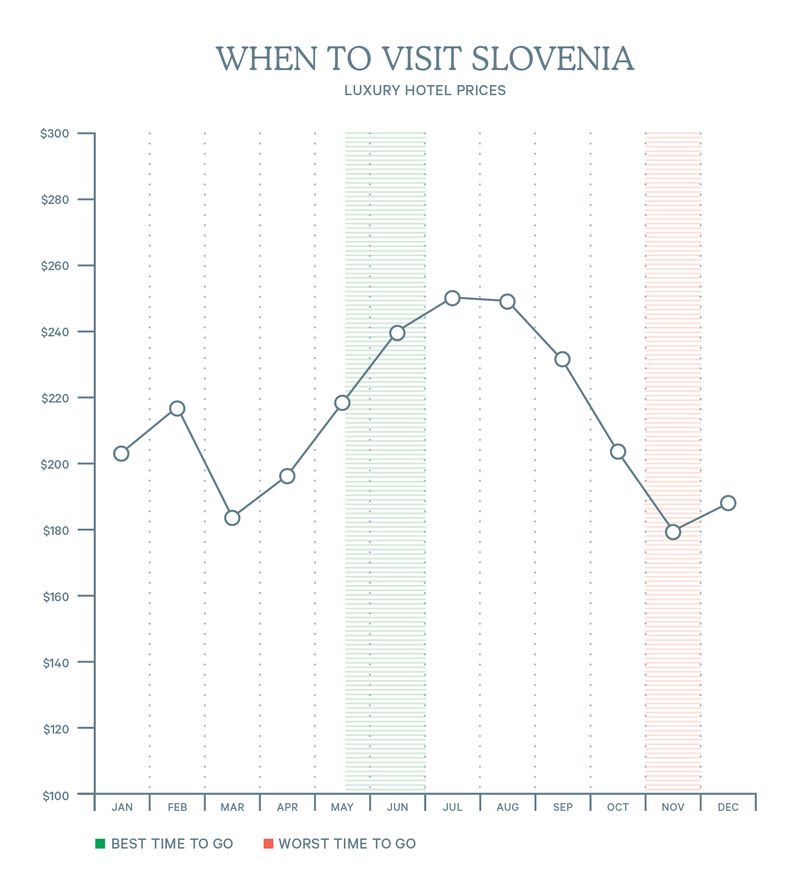
Carve out time for a visit to Hisa Franko, where the world’s best female chef, Ana Ros, (of Chef’s Table fame) applies New Nordic precision to local ingredients such as river trout, chestnuts, and meadow-grazed lamb. This might be Melania Trump’s home turf, but Ros is the country’s first lady.
When to go: Stick to the end of May and the month of June, when everything is green. It’s also when the Cherry Festival takes place, celebrating the bountiful local fruit harvest.
When not to go: November, when the only thing getting locals through cold, foggy days is the promise of the holiday season.
Whom to call: Jure Gaspersic of Adventure Slovenia.

Photographer: Adrian Gaut
LOS ANGELES
There have been rumblings about the revival of Downtown L.A. for the better part of a decade, but finally, it’s here—wildfires be damned. In 2017, years of capital investment culminated in the first-phase openings of multiuse developments such as the Row DTLA, which features retail shops by Tokyobike, a boutique called LCD that aggregates emerging designers, and a weekly Sunday market peddling food and crafts. There’s also City Market South, in a vast former wholesale produce market, which is jammed with such high-profile cafes as Cosnoscenti Coffee and restaurants like Rossoblu, from acclaimed chef Steve Samson.
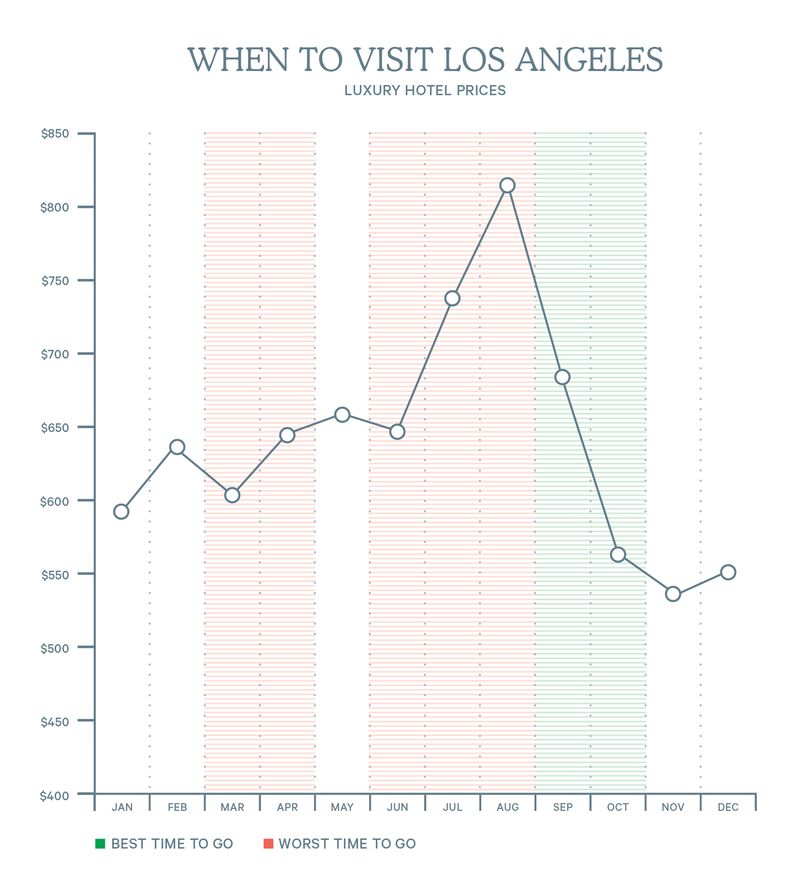
Both projects are set to fill out in the coming year with prominent tenants. An offshoot of Tartine, the beloved San Francisco bakery, is set to open in the Row DTLA in the first half of 2018. By then, New York’s standard-setting NoMad hotelwill have landed in town, a block away from its far-more-casual sibling, the Freehand. It’s set to bring 241 Italian-inspired rooms—and a restaurant by Eleven Madison Park’s Daniel Humm and Will Guidara—to the historic Giannini Place building on 7th and South Olive streets.
Best time to go: September and October. Once school is back in session, hotels are more affordable, crowds thin out, and the weather is perfect.
Worst time to go: The city is known for great weather year-round, but lines at the major sights and theme parks hit a peak during spring break, as well as from June to August.
Whom to call: Jay Johnson of Coastline Travel.
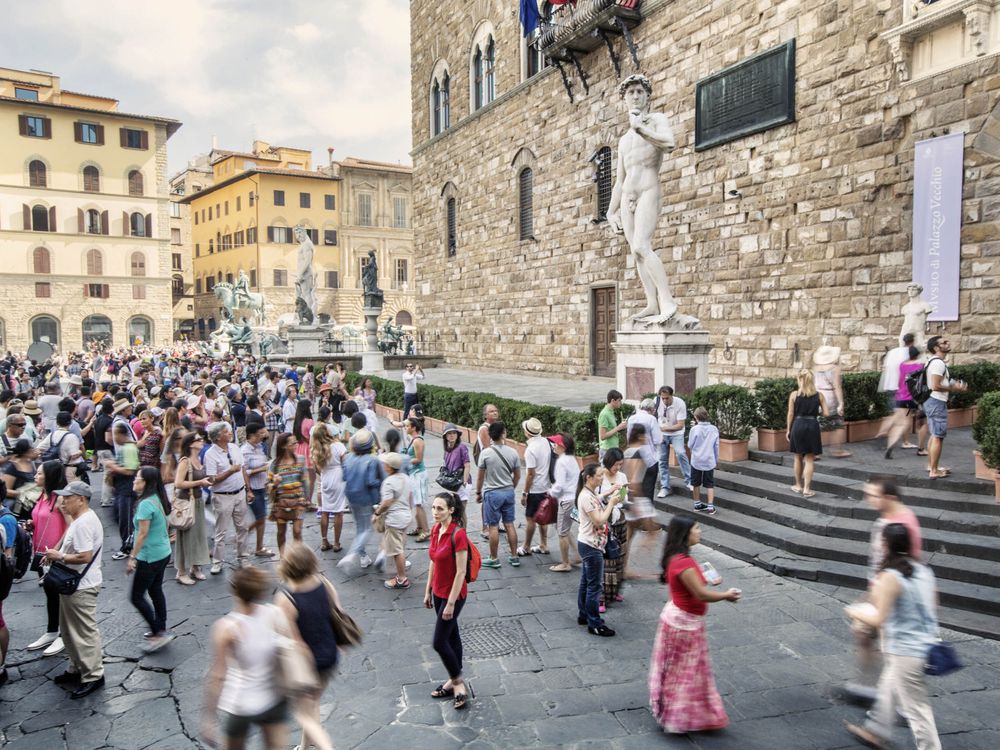
Photographer: Andrea Frazzetta
FLORENCE
What’s old is new again in Renaissance-mad Florence. In 2018, the half-mile-long Vasari Corridor—built by the Medicis in order to move unseen between their Uffizi Gallery offices and the Pitti Palace across the Arno River—will open to the public after a two-year-long renovation. Only small groups and important diplomats have walked the narrow, 16th century passageway lined with original frescoes and Greco-Roman inscriptions. Go in October, and you can tack on a viewing of the Codex Leicester,a collection of Leonardo da Vinci’s scientific drawings and writings, at the Uffizi. (They’ll be on loan from Bill Gates.)

Expect a few 21st century tricks, too. Last fall, the Franco Zeffirelli Center for the Performing Artsopened as an anchor to the refurbished baroque Plaza San Firenze, with exhibits focused on Italian film and a lineup of classical music performances. The city is also introducing seasonal pricing and early bird tickets to major attractions, while posting waiting times for museums on the city’s new tourism website. It’s part of a push to correct Florence’s perpetually mobbed status—a boon to both visitors and locals.
When to go: The early spring months of March and April are perfect for favorable weather and hotel rates. Same goes for late October and early November.
When not to go: June to August. It’s high peak season—and very hot.
Whom to call: Filippo Curinga from IDI Travel.
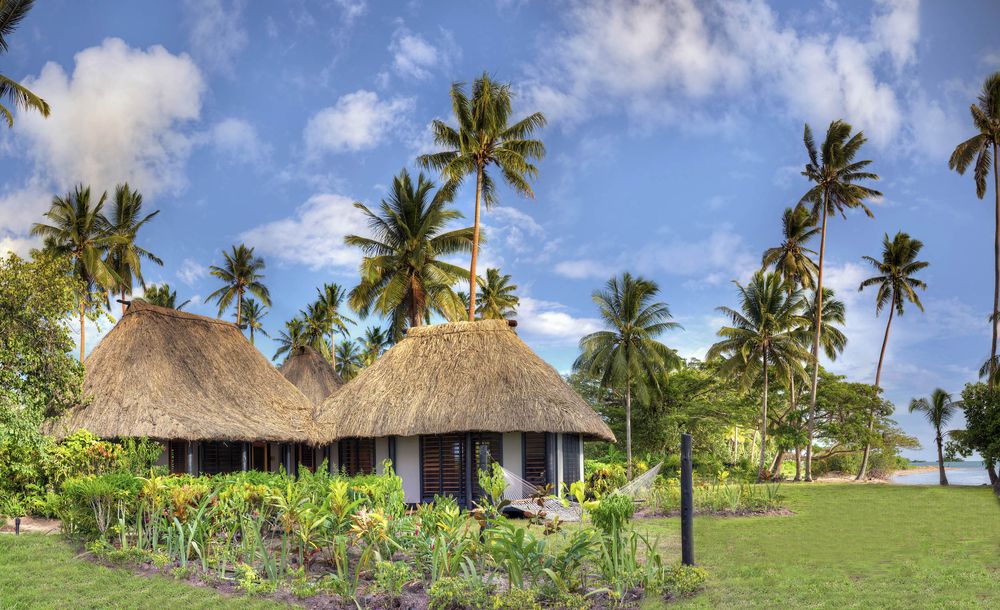
Source: Jean-Michel Cousteau Resort, Fiji
FIJI
Almost two years after Cyclone Winston caused an estimated $1.4 billion in damage, Fiji is back on its (bare) feet, with sustainable luxury resorts reopening all over the archipelago. At Turtle Island, 14 oceanfront villas—or bures, as they’re called in Fijian—are fresh off a redo that features natural materials such as thatched coconut-husk roofs and driftwood light fixtures. In addition to more contemporary interiors, the 25-room family-friendly Jean-Michel Cousteau Resort lays claim to Fiji’s first water reclamation plant; it also recently added coral and clam restoration to its renowned underwater education programs.

These refreshed classics are joined by two billionaire-owned private-island retreats that share a dedication to local food sourcing: Wakaya Club & Spa, owned by Seagram Co. heiress Clare Bronfman, and Kokomo, the passion project of Australian developer Lang Walker. One exception to the region’s shrinking carbon footprint is Nadi International Airport on the main island of Viti Levu, which is welcoming more and more flights, including new nonstops from San Francisco and Los Angeles.
When to go: September or October. It’s not too hot or too cold—and most important, not too crowded.
When not to go: From January through March, cyclones are a possibility; June and July are extra-busy, with winter holiday-goers from Australia and New Zealand.
Whom to call: Lynette Wilson of Destination World.
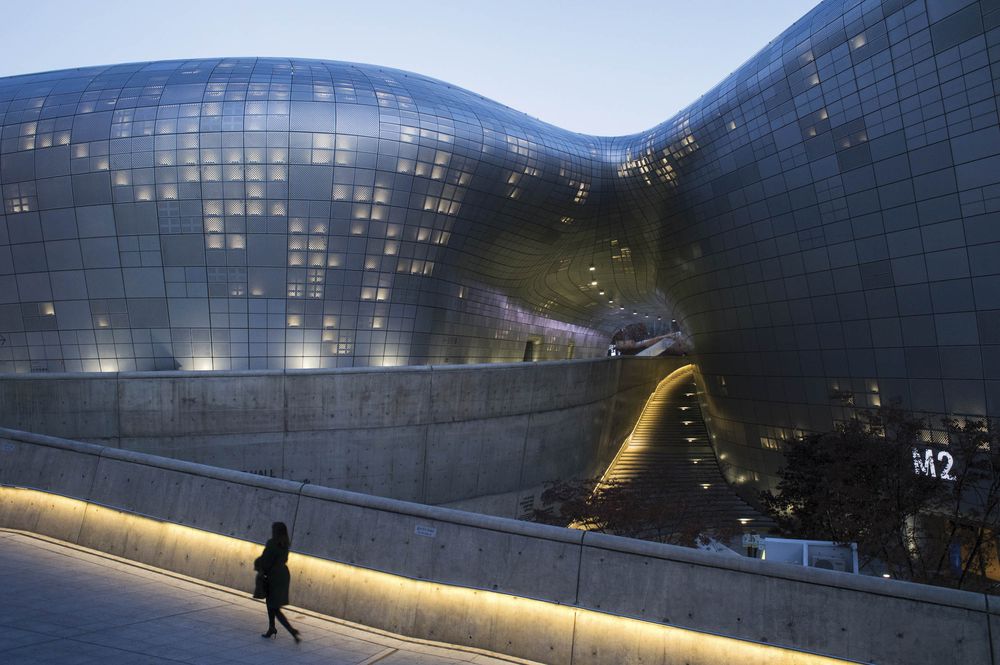
Photographer: Sangsuk Sylvia Kang for Bloomberg Businessweek
SOUTH KOREA
Despite the increasingly long shadow cast by its neighbor to the north, South Korea has an ebullient popular culture that continues to soar. Music, food, and architecture—not to mention February’s Winter Olympics in Pyeongchang—all offer exciting excuses to pay a visit in 2018. The host country is booming.

Among the reminders of Seoul’s economic growth are the newly completed Lotte World Tower, the fifth-tallest building in the world, and Seoullo 7017, an elevated pedestrian “skypark” reminiscent of New York’s High Line. The always-cosmopolitan neighborhood of Gangnam—which became shorthand for excessive consumption through Psy’s Gangnam Style—is offering more places than ever to flaunt your wealth. There are the popular wine bar Louis Cinq; Toc Toc, with its market-driven tasting menu; and a new eponymous restaurant by local sensation Hyun Seok Choi.
The action isn’t limited to the capital. A quick flight 300 miles south brings you to the volcanic island of Jeju, with its Unesco-protected biosphere reserve. Jeju aims to boost domestic tourism with a 600-acre entertainment megaplex called Shinhwa World. Opening in phases through the year, it will feature an amusement park with roller coasters designed by film studio Lionsgate, a Four Seasons resort, and a state-of-the-art concert space born of a strategic partnership with the biggest names in K-Pop. The genre has never been more globally popular, with megawatt acts such as Twice and BTS notching hits on international music charts.
When to go: October and November offer warm days, cool nights, vibrant foliage, and superlative festivals. Target the Namdo Food Festival or Gwangju Kimchi Culture Festival, where you can partake in tons of culinary workshops or simply eat your heart out.
When to not go: Unless you’re a fan of sticky, wet weather, skip the summer monsoon season.
Whom to call: Rani Cheema of Cheema’s NYC.
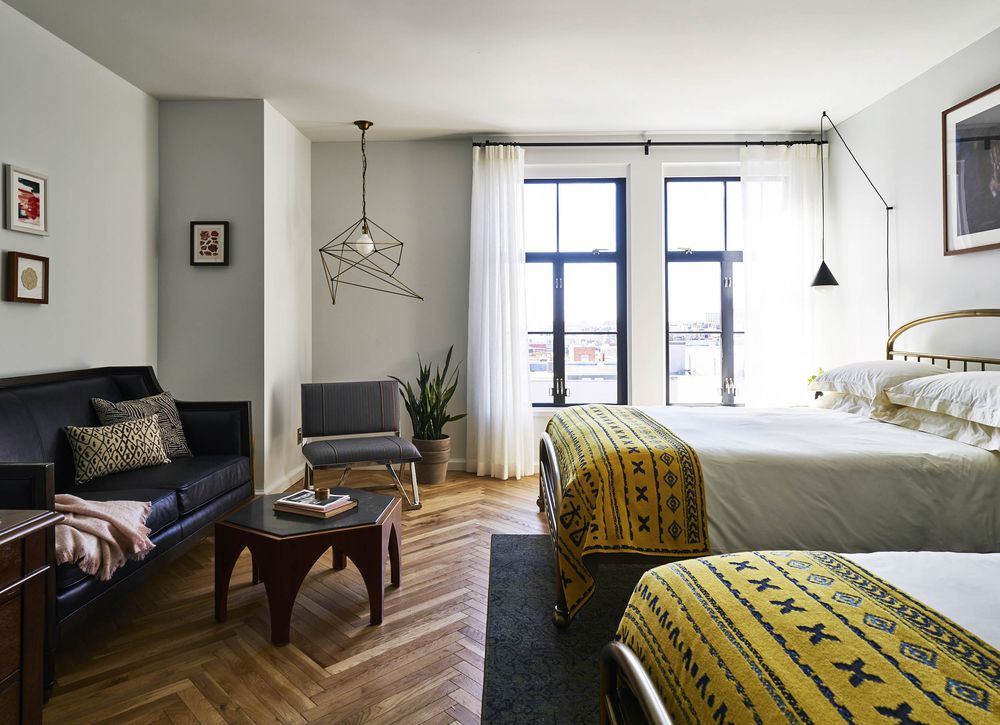
Photographer: Adrian Gaut
WASHINGTON
While the U.S. capital’s biggest news is about topics other than food, the city has been nurturing one of the most thrilling restaurant scenes in the country. The $2.5 billion, mile-long District Wharf opened in 2017, a live-work development that’s bursting with good eats. Its crown jewel is chef Fabio Trabocchi’s stylish Spanish restaurant Del Mar, which will soon be joined by the Union Market favorite, Rappahannock Oyster Bar, and an Italian restaurant-market hybrid from Nicholas Stefanelli. Of course, the Wharf isn’t just for eating: It’s also home to the 57,000-square-foot music venue the Anthem, which has hosted LCD Soundsystem and Bob Dylan since it opened in October, and a smart boutique hotel from Hilton’s convivial new brand, Canopy.

Downtown, the showdown of hot restaurants will get wrapped in partisan politics. A high-profile spinoff of New York’s Sushi Nakazawa is coming to the Trump Hotel this spring, and a vegetable-focused concept by up-and-coming chef Tim Ma will anchor Eaton Workshop, a new hotel that does double-duty as activist safe space. You can avoid red-button issues entirely at the Line DC hotel. Set in a former church, it comes online in January with 220 airy, art-filled rooms and a slew of food and drink offerings by James Beard winner Spike Gjerde.
When to go: Catch the cherry blossoms from mid-March to mid-April (roughly!), or stick to the mild fall months.
When not to go: June through August. Washington was built on a swamp, a fact that’s readily apparent in summer.
Whom to call: Paul Bennett of Context Travel.

Photographer: Robert Harding/Alamy
LOS CABOS, MEXICO
With tony Caribbean destinations such as St. Barths still hurting from last year’s hurricanes, Los Cabos is emerging as 2018’s hottest beach escape. The region will soon welcome $1 billion of new hotel inventory, including some adventure-focused newcomers that are reimagining what it means to vacation in Baja.

Whereas most of the area’s resorts aren’t on swimmable beaches, the Four Seasons at Costas Palmas will have an unconventional location on the undeveloped East Cape, where the calm Sea of Cortez, unlike the rough Pacific, is perfect for swimming, snorkeling, and kite surfing. (It opens late in the year.) If you can’t wait that long, try Zadún, only the fourth location of Ritz-Carlton’s ultra-high-end Reserve brand, set to push the area’s sky-high standards of luxury when it opens in June.
Other entries by top-tier brands such as Montage, Nobu, and Luxury Collection will likely give the area more luxury stays per square mile than anywhere on the planet. Throw in a $50 million airport enhancement at Los Cabos International—including a much-needed second terminal—and you’ve got an A-list getaway that rivals the heyday of Acapulco.
When to go: Winning temperatures and post-spring break deals make May a great time to visit—though the peak winter months make for memorable whale sightings.
When not to go: September, when humidity is a certainty and hurricanes are possible.
Whom to call: Julie Byrd of Cabo Villas.

Photographer: Paul Broussard
NEW ORLEANS
The French Quarter may still be the nexus of New Orleans, but the real energy of the city—which celebrates its tricentennial this year—is expanding far beyond that famously rowdy tangle of streets. The riverfront is enjoying its own renaissance, thanks to the $30 million, 1.5-mile-long Crescent Park that connects charming residential neighborhoods to the east such as Faubourg Marigny and Bywater with more tourist-familiar areas. Meanwhile, expanded streetcar routes can get you quicker than ever to the long-overlooked Central Business District (CBD), which has emerged as a destination in its own right.

Nopsi, the 1920s-era headquarters of the New Orleans Public Service Inc., opened there in July with 217 refined guestrooms and a Vegas-worthy rooftop pool. The funky, 30-room Catahoula is also fresh on the scene, with a buzzy pisco bar and coffee shop. From the CBD, it’s a short ride to the Garden District and the venerable Commander’s Palace, which this year toasts its 125th birthday. Be sure also to check out the latest project from the restaurant’s executive chef, Ti Martin. When it opens this fall, classes at her New Orleans Culinary and Hospitality Institute will be a newly intimate way to experience the unique flavor of New Orleans.
When to go: Spring, for festival season. January can sometimes offer good value ahead of Mardi Gras.
When not to go: July to September. Oppressive humidity makes it extremely uncomfortable.
Whom to call: Mary Ann Paternostro of CWT Vacations.
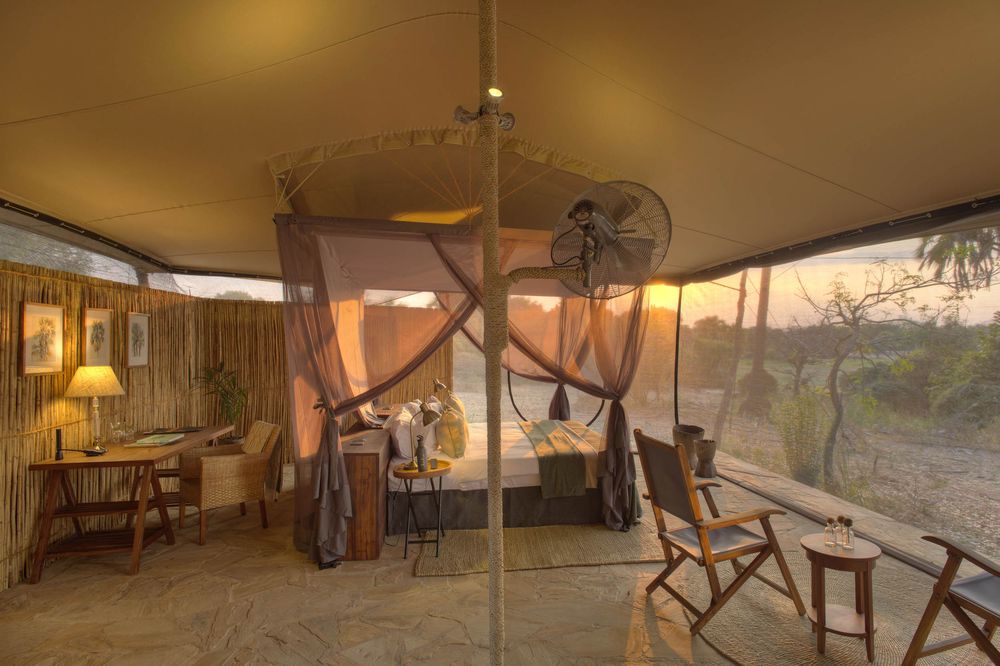
Source: Asilia Camps and Lodges
SOUTHERN TANZANIA
Watching the Great Migration in the Serengeti is such a popular bucket-list trip that the region can feel as saturated with binoculars-toters as it is with thundering wildebeest. Head to Southern Tanzania’s Selous and Ruaha game reserves, however, and you can spend a week without seeing another safari vehicle. What you’ll find instead is the largest giraffe population in the country, along with one-tenth of Africa’s lion population.

Only in the last year has it become viable to vacation here in style: The first major entrant, off-the-beaten-path specialist Asilia Africa Ltd., opened the Roho ya Selous resort in September. Its eight canvas tents occupy a concession that’s home to one of Africa’s healthiest wild dog communities. At the same time, it debuted the eight-suite Jabali Ridge in Ruaha, where entire walls of shuttered windows can be opened up to the elements. Watching the sunset from your private deck is a perk you’ll find at any of the nation’s top lodges; being able to feel like the only inhabitant of a national park the size of New Jersey is a luxury that can only be found right here.
When to go: Dry season, when wildlife congregates around scant watering holes, spans from July to November. If it’s the Great Migration you’re after, narrow that window further, focusing on mid-July through August.
When not to go: April. Heavy rains come, with Tsetse flies.
Whom to call: Deborah Calmeyer of Roar Africa.
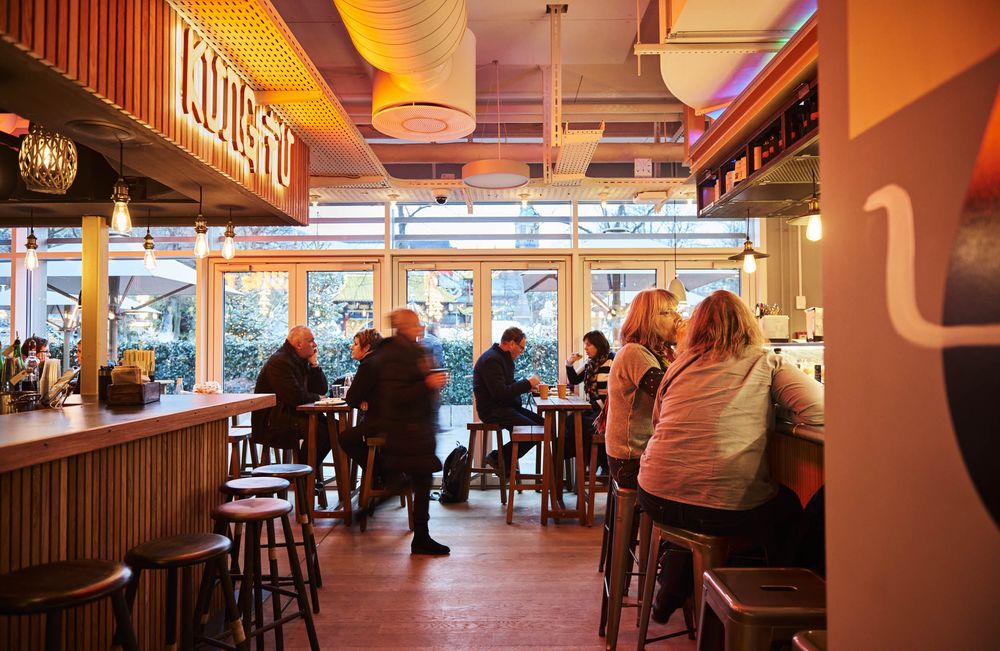
Photographer: Ulf Sven for Bloomberg Businessweek
COPENHAGEN
The knock on Copenhagen—consistently ranked one of the world’s best places to live—is its shortage of top-tier accommodations for visitors. Sure, the opulent D’Angleterre, a grand dame on central Kongens Nytorv square, is fit for royals and celebs with entourages. Had you wanted something more restrained, few options matched excellent service with smart Scandinavian design—until now. Hotel Sanders, a high-end boutique founded by Danish dancer Alexander Kolpin, opened in November with claw-foot tubs in retro rooms and a concierge who can get you behind-the-scenes access at the ballet. It’s just a 15-minute walk to world-famous restaurant Noma, which will reopen in February with a focus on local seafood.

There’s also the Nobis Hotel, with 77 loft-like rooms in the lavish, landmarked Royal Danish Academy of Music. It opened in October, a stone’s throw from Tivoli Corner, a sprawling, new food hall (soon to be flanked by iconic design shops such as Illums Bolighus) next to Tivoli Gardens amusement park. The market collects some of the region’s favorite eateries; the team behind Kadeau has a stall featuring produce from the island of Bornholm, while the Bird and the Churchkey team makes superb open-faced sandwiches.
When to go: May to October—though midsummer nights in late June are especially enticing for their few hours of darkness.
When not to go: January to March, when bitterly cold temperatures are paired with painfully short days.
Whom to call: Jack Ezon of Ovation Travel.

Source: Four Seasons
TUNISIA
These days, luxury brands are bullish on Tunisia, with its many cobblestoned old towns and whitewashed beach villages that feel like the Greek isles, minus the crowds. Why now? One reason: Tourists are starting to come back after a terror attack in 2015 near the coastal town of Sousse brought tourism to a standstill; visitation shot up nearly 50 percent in the first half of 2017, and British travel warnings were lifted in July.

The Four Seasons Hotel Tunis, which opened in December, is imbued with North African tradition with its domed architecture and 203 Arabesque style rooms. Asian brand Anantara, known for its epic honeymoon resorts, will conjure life as a nomad with an outpost opening in mid-2018 near the desert oasis of Tozeur, where Star Wars: Episode 1—The Phantom Menace was shot. Last to open (and perhaps most anticipated) will be Six Senses Gammarth, a low-rise seaside property outside the capital with an aesthetic that blends Berber, Ottoman, Arab, and French influences—a cultural mélange that can only be found here.
When to go: Mid-March to mid-May, for beautiful wildflowers and great value.
When not to go: Avoid Ramadan (May 16 to June 14), when restaurants are largely closed. Weather in July and August can be scorching.
Whom to call: Jerry Sorkin of Iconic Journeys Worldwide.
